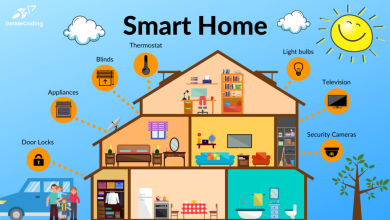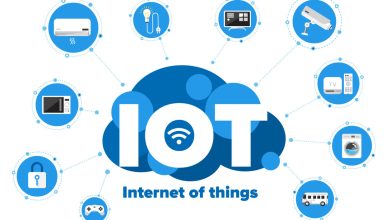Blockchain for Government Transparency

What is Blockchain?
Blockchain is a digital, decentralized ledger that records transactions across multiple computers. Unlike traditional databases, which store data in a central location, blockchain distributes data across a network. This structure makes it secure, transparent, and tamper-proof. Each record, or “block,” links to the previous one, forming a “chain” that can be seen by all participants.
For government use, blockchain offers a transparent and secure system to track and verify data. It can reduce corruption, boost public trust, and make information more accessible.
Why Use Blockchain for Government Transparency?
Blockchain’s structure naturally fits with transparency initiatives. Governments handle vast amounts of sensitive data, ranging from public funds to voting records. By using blockchain, governments can create public, verifiable records. Here’s why blockchain is a powerful tool for transparency:
1. Immutable Records
Blockchain ensures that once data is recorded, it cannot be altered. This immutability prevents tampering and manipulation, making records more reliable. For governments, this feature is essential in reducing fraud and ensuring that records remain trustworthy over time.
2. Public Accountability
Blockchain allows the public to view records in real time. When applied to government spending or election results, it creates accountability. Citizens can track how funds are allocated and confirm that votes are counted accurately. This transparency builds trust and reduces skepticism about government actions.
3. Decentralization Reduces Single Points of Failure
Traditional government databases are often centralized, meaning that one breach can compromise all stored data. Blockchain, on the other hand, distributes data across multiple nodes. This setup minimizes the risk of data loss, fraud, or cyber-attacks.

Key Use Cases for Blockchain in Government
Blockchain can improve transparency across many government sectors. Here are the primary areas where it can make a difference:
1. Voting Systems
Voting integrity is crucial for democracy. Blockchain offers a secure, transparent way to conduct elections. With a blockchain-based voting system, each vote would be recorded on the blockchain, preventing tampering and fraud. Citizens could verify their votes and see that they were counted, promoting trust in the electoral process.
2. Public Finance and Budgeting
Governments handle large budgets, which require transparency to avoid misuse. Blockchain can track each transaction in public finance. By recording expenditures on the blockchain, governments can create an open, verifiable trail of spending. Citizens could access this information to see where funds are going and ensure accountability.
3. Land and Property Registries
Land ownership records are often complex and prone to disputes. Blockchain provides a tamper-proof way to manage property records. Governments can use blockchain to create transparent, unchangeable records of land ownership. This setup reduces fraud and corruption in property dealings, as all records are transparent and verifiable.
4. Supply Chain Management
Governments oversee the supply of essential goods, such as medicine and food. Blockchain can help monitor these supply chains, ensuring that products are authentic and safe. By recording each step of the supply process, blockchain improves transparency and traceability, making it easier to detect and prevent fraud or mismanagement.
5. Identity Verification
Identity verification is vital for accessing public services. Blockchain allows for decentralized identity management, where individuals control their own information. Governments can use this system to verify identities without storing sensitive data centrally, reducing privacy concerns and improving transparency in public service access.
Benefits of Blockchain for Government Transparency
Using blockchain in government systems brings many benefits that can lead to more transparent governance:
1. Reduces Corruption
Blockchain’s transparency can deter corruption. When officials know that their actions are recorded and visible to the public, they are less likely to engage in dishonest practices. Additionally, blockchain’s immutable records make it harder to alter or cover up fraudulent activities.
2. Improves Public Trust
Trust in government is essential for a healthy society. By using blockchain, governments can show that they are committed to transparency and accountability. When citizens see that records are open and accessible, they are more likely to trust government actions and policies.
3. Enhances Efficiency
Blockchain automates record-keeping and verification processes, which can reduce paperwork and administrative burdens. For instance, a blockchain-based voting system could streamline vote counting, saving time and resources. This efficiency makes government operations smoother and less prone to errors.
4. Increases Data Security
Blockchain’s decentralized structure reduces the risk of data breaches. By storing data across a network rather than in a single location, it becomes more difficult for hackers to compromise the system. This security is vital for government data, which often contains sensitive information.

Challenges of Implementing Blockchain in Government
Despite its benefits, blockchain faces challenges that may hinder its adoption in government systems:
1. Technical Complexity
Blockchain technology can be challenging to implement, especially on a large scale. Government systems would need to integrate blockchain infrastructure, which requires technical expertise and resources. Training staff to use and maintain the technology could be costly and time-consuming.
2. Regulatory and Legal Barriers
Blockchain is still new, and many governments have yet to establish clear regulations around its use. Legal challenges could arise, especially when handling sensitive data. Governments must create a regulatory framework to ensure that blockchain systems comply with privacy and security laws.
3. Privacy Concerns
While blockchain is secure, it’s also transparent, which may raise privacy issues. Governments must balance transparency with citizens’ right to privacy. For example, while financial records should be open to the public, sensitive information, such as individual identities, must be protected.
4. Scalability Issues
Blockchain systems can struggle with scalability. As more data is added to the blockchain, the system can slow down, which is problematic for government operations. Developers are working on solutions, but current limitations may impact large-scale blockchain adoption.
Examples of Blockchain for Government Transparency
Some governments are already exploring blockchain’s potential for transparency:
1. Estonia’s Digital Government
Estonia is a leader in digital government services. It uses blockchain to secure its data, from healthcare records to voting systems. Estonia’s blockchain-based systems allow citizens to access their data securely, enhancing transparency and privacy.
2. Blockchain Voting in Switzerland
Switzerland has tested blockchain voting in local elections. Voters could cast their ballots using a blockchain-based platform, which ensured accuracy and transparency. This trial showed that blockchain could make voting more accessible and secure.
3. Public Finance Tracking in Brazil
In Brazil, blockchain has been used to track public spending. By recording each transaction on a transparent ledger, the government can reduce corruption. Citizens can view how public funds are spent, making the budgeting process more accountable.
The Future of Blockchain for Government Transparency
As blockchain technology advances, its potential for improving government transparency will grow. By addressing the challenges, governments can make blockchain a valuable tool for building trust and accountability. In the future, we may see blockchain-based systems become the standard for transparent, secure, and efficient government operations.
For governments worldwide, blockchain represents an opportunity to enhance transparency and public trust. Its benefits could transform public sectors, from voting and finance to identity verification. While challenges remain, the technology’s advantages make it a promising solution for more transparent governance.




